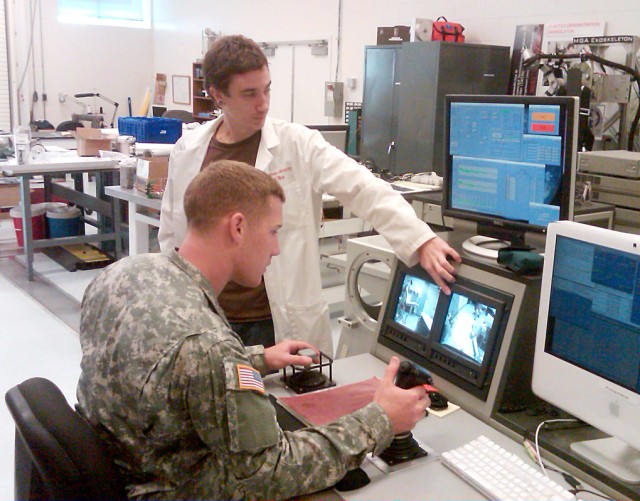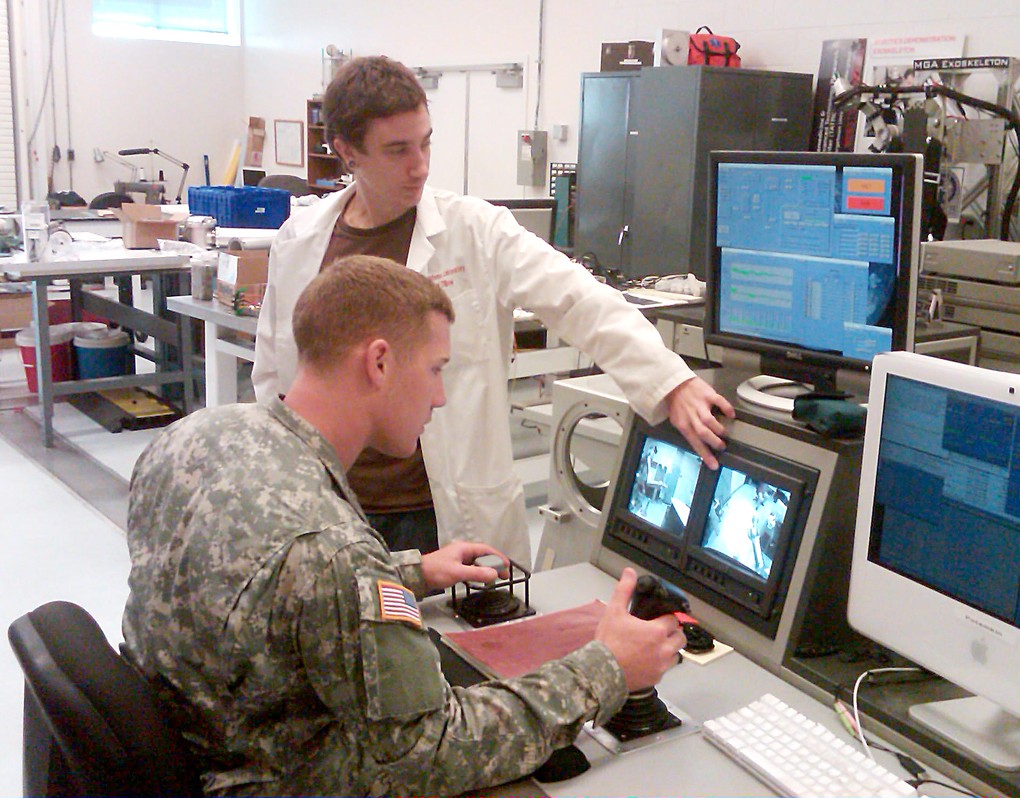
WEST POINT, N.Y. (Aug. 25, 2010) -- The Six Million Dollar Man may be a work of science fiction, but one piece of him is already becoming scientific fact. West Point Class of 2011 Cadet Elijah Bales spent four weeks this last summer working on improving West Point's own bionic foot project.
Originally, the bionic foot was a three-year program. In the first year, the project team developed a walking foot, followed by a running foot the next year. For this third year, the team will develop a model that an amputee will use to conduct an Army Physical Fitness Test. In order to achieve that, the team plans to cut the weight by over 50 percent and add a second degree of freedom to allow for more range of motion and a more biologically accurate ankle.
Bales visited various facilities that have contributed to the science of modern prosthetics to research solutions to achieve this year's goal. He traveled to Phoenix to work with SpringActive for one week on improving the mechanics of the bionic foot. Lt. Col. Joseph Hitt, Department of Civil & Mechanical Engineering instructor and officer in charge of the project, had previously worked with the company during his doctoral studies on prosthetics.
From there, Bales went to Fort Detrick in Fredrick, Md., to conduct more research at the Telemedicine & Advanced Technology Research Center. He worked with the prosthetics portfolio to gather more ideas on how to improve the bionic foot, and helped write research proposals and ideas for other companies as well.
In addition, he spent a few days at Walter Reed Army Medical Center to visit the prosthetics lab and physical therapy clinic, and talk to amputees about their prosthetic needs. Currently, active duty military amputees perform their duties using as many as a dozen - or in some cases more - different prosthetics.
"I learned (this summer) that every amputee likes a different prosthetic," the Knoxville, Tenn., native said. "There's not one end-all, be-all solution for amputees, but if you have a device that's as customizable as possible they can change (the foot) and allow them to do whatever they needed to do versus doing just part of what they needed to do."
Bales also visited KCF Technologies, an engineering company that works with Penn State University, to learn about power-generating solutions for the motors inside the foot. The company specializes in making energy-harvesting devices that generate electricity through motion.
"There has been a lot of research into piezoelectrics, which is a pretty much a material that if you shake it, it produces an electric signal," Bales said. "Or if you induce an electric signal, it will shake."
With this semester's research and development underway, Bales hopes to have new designs completed by October and necessary parts acquired before the end of the calendar year. After assembly and preliminary tests are done in the next semester, the foot should be ready for the APFT after spring break.
If the APFT-fielded foot works, Bales also hopes to introduce new ideas and set up the next couple of years for success with the project. The ideal prosthetic device would aid the amputee in traveling over various surfaces such as flat, sandy or rocky terrain without needing to switch leg models for each.
Bales documented his experiences in a blog on Army Strong Stories, which can be accessed at www.armystrongstories.com/blogger/elijah-bales/.

Social Sharing